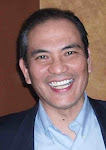 AN OVERVIEW OF THE PROBLEM-SOLVING METHODOLOGY OF ONE OF THE MOST PRESTIGIOUS MANAGEMENT CONSULTING FIRMS
AN OVERVIEW OF THE PROBLEM-SOLVING METHODOLOGY OF ONE OF THE MOST PRESTIGIOUS MANAGEMENT CONSULTING FIRMSFrom their website: McKinsey & Company is a global management consulting firm. We are the trusted advisor to the world’s leading businesses, governments, and institutions. They advise leading companies on issues of strategy, organization, technology, and operations. Their alumni account for a decent proportion of the heads of American industry.
- What are the key drivers or factors that drive the problem?
Knowing these drivers or factors ensures that the hypothetical solution will address the drivers that cause the problem and not the symptom that is the problem.
- What actionable recommendation can be made for each driver or factor?
The proposed solution for each driver must be able to be turned into action to be useful.Second, the MK team rigorously tests their hypothesis. They gather more facts, ask more questions, and then
gather even more data.
Obtaining facts is important to the testing process since facts always trump gut instincts and since their actionable recommendation(s) depend upon factual assumptions.
Next, the team turns its attention back to its hypothesis. During this stage, they follow these guidelines:
- Major issues are continually divided until they reach the level of being separate and distinct. In other words, each issue can be addressed individually and that solution will fix or mitigate that issue and that issue, alone.
- Every aspect of the business problem falls under one and only one issue. This is analogous to the first guideline. The following illustration clarifies this:

The pentagons represent the specific drivers that cause the issue to arise. Note how the three drivers that create the broad issue have been identified into two groups. The upper specific issue was caused by the two pentagons. The lower issue was caused by one pentagon.The deliverable, or end result, of this stage is a conceptual diagram of the different parts of the business problem. It is important to note that these parts do not overlap with any other. These parts are, therefore, clearly distinct from each other. Furthermore, each distinct part will have its specific drivers identified with it. Returning to the previous illustration, the correct solution to the two pentagons will eliminate the upper specific issue. The lower specific issue, on the other hand, will be eliminated if the correct solution to the single pentagon were found and applied to it.
The goal of these guidelines is summarized by a McKinseyite acronymn: MECE.
MECE stands for Mutually Exclusive and Collectively Exhaustive. It means that each problem and solution must be mutually exclusive (no overlapping) and collectively exhaustive (everything, be it problem or solution, has been included).
Our friend, the ex-McKinseyite, surprised us after he claimed that practically all problems—regardless of their complexity and scale—can be distilled into two to five major issues.This is the framework of their methodology.
I can see that it has value. It's a welcome addition to the rest of my tools. It can be applied to anything it seems—even to human relationships!

No comments:
Post a Comment